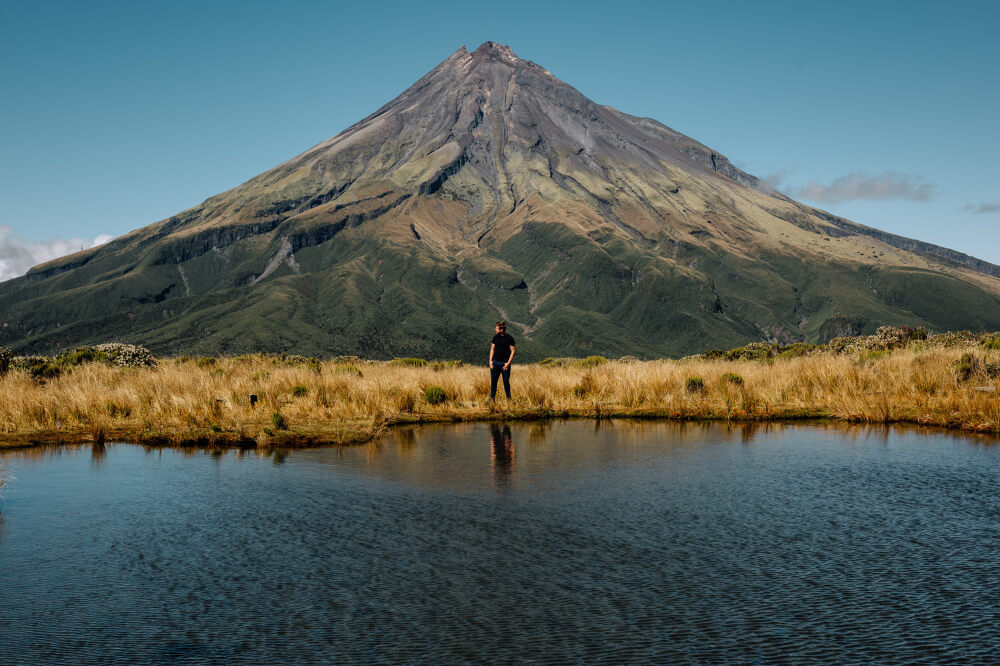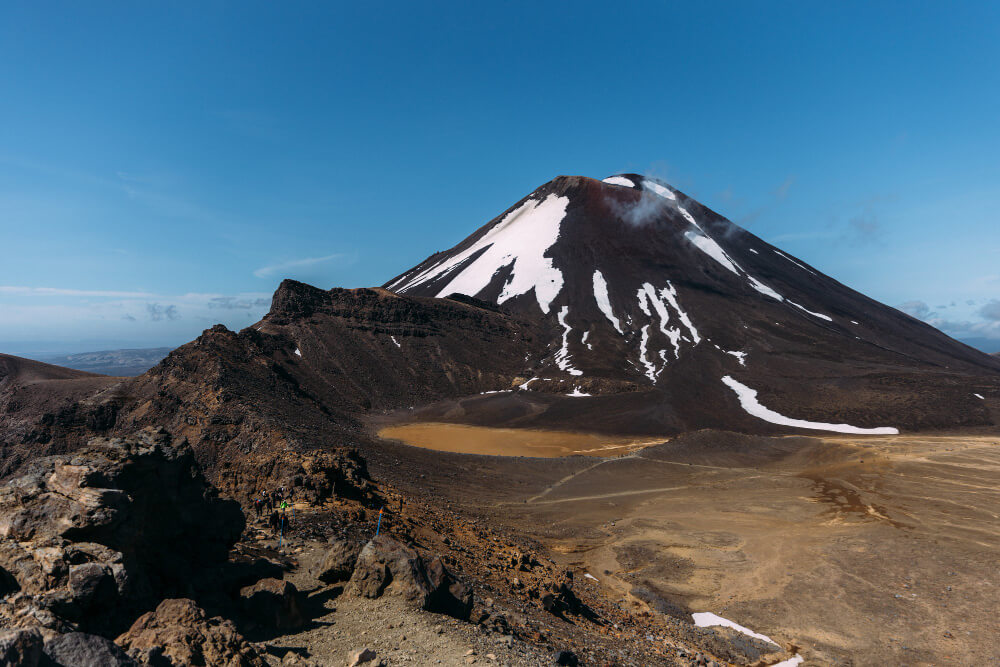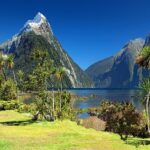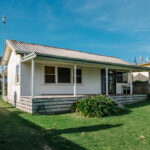
Welcome, fellow nature lovers, to our expansive guide on delving into the captivating world of volcanic landscapes! Whether you’re a seasoned explorer or someone yearning to reconnect with the primal beauty of our planet, this guide is crafted with your adventurous spirit in mind.
We’ll embark on a journey together, answering burning questions, addressing concerns, and providing invaluable insights to enrich your exploration of these awe-inspiring terrains.
Understanding Volcanic Landscapes
What Defines a Volcanic Landscape?
- Picture this: Standing amidst a panorama of rugged peaks, undulating plains, and dramatic valleys, all molded by the tumultuous forces brewing beneath the Earth’s surface. Volcanic landscapes are the result of millennia-old eruptions, where molten lava and ash sculpt the terrain into a testament of nature’s raw power.
- Keywords: volcanic landscapes, geological forces, molten lava, dramatic terrain
Global Diversity of Volcanic Landscapes:
- From the iconic silhouette of Mount Fuji in Japan to the ethereal beauty of the Blue Lagoon in Iceland, volcanic landscapes span continents, offering a kaleidoscope of geological wonders to explore. Each locale boasts its own unique features, from steaming geysers to vibrant crater lakes, providing endless opportunities for discovery.
- Keywords: Mount Fuji, Blue Lagoon, geological wonders, discovery
Exploring Volcanic Landscapes Safely:
Prioritizing Safety Amidst Nature’s Fury:
Before setting foot on these dynamic landscapes, it’s imperative to equip yourself with knowledge and preparedness. Consider these essential safety tips:
Stay informed about current volcanic activity and heed any warnings issued by local authorities.
Dress in layers and wear sturdy footwear to navigate uneven terrain and changing weather conditions.
Carry essential supplies such as water, snacks, first-aid kits, and navigation tools to ensure you’re well-prepared for any situation.
Remember, while the allure of adventure beckons, safety should always remain paramount.
Navigating Guided Tours vs. Independent Exploration:
When planning your volcanic adventure, you’ll face the choice between joining a guided tour or venturing out independently.
Both options offer distinct advantages, catering to different preferences and comfort levels.
Guided tours provide expertise, safety assurances, and the opportunity to connect with fellow travelers, making them ideal for those seeking structured experiences.
Independent exploration offers flexibility, solitude, and the freedom to chart your own course, allowing for more personalized adventures.
Consider your preferences and level of experience when making this decision, ensuring you choose the option that aligns best with your travel style.
Keywords: guided tours, independent exploration, personalized adventures

Making the Most of Your Volcanic Adventure:
Capturing the Essence of Volcanic Landscapes:
Whether you’re a seasoned photographer or an amateur enthusiast, volcanic landscapes present a myriad of opportunities to capture stunning imagery. From the fiery glow of lava flows to the serene beauty of crater lakes, each moment is a chance to immortalize nature’s splendor.
Equip yourself with the right gear, experiment with different techniques, and allow your creativity to soar as you document your volcanic journey through the lens.
Keywords: photography tips, capturing nature’s splendor, immortalizing moments
Embracing Local Culture and Traditions:
Beyond the geological marvels, volcanic landscapes are often steeped in rich cultural heritage and traditions. Take the time to immerse yourself in the local culture, indulging in traditional cuisine, participating in cultural festivals, and learning about indigenous beliefs tied to the land.
Engage with local communities, listen to their stories, and gain a deeper understanding of the symbiotic relationship between humans and volcanoes throughout history.
Keywords: cultural immersion, traditional cuisine, indigenous beliefs, community engagement
Conclusion:
As we conclude our exploration of volcanic landscapes, let us carry forth a newfound appreciation for the majesty of nature and the importance of responsible stewardship. By embracing safety measures, seeking authentic experiences, and fostering cultural exchange, we not only enrich our own adventures but also contribute to the preservation of these extraordinary landscapes for future generations to enjoy.
FAQs
Can volcanoes form just anywhere?
No, volcanoes do not form just anywhere. Volcanoes typically form at the boundaries of tectonic plates, where the Earth’s crust is thinner and magma can more easily reach the surface. The most common locations for volcanoes are along the “Ring of Fire” around the Pacific Ocean, at mid-ocean ridges, and in areas of continental rifting.
Can volcanoes produce large explosive eruptions and rivers of fluid lava at the same time?
No, volcanoes generally do not produce large explosive eruptions and rivers of fluid lava simultaneously. Explosive eruptions are driven by the buildup of gas pressure within the volcano, while effusive eruptions of fluid lava are driven by lower gas content. These two eruption styles are usually mutually exclusive.
Can lakes near volcanoes become acidic enough to be dangerous to people?
Yes, lakes near volcanoes can become dangerously acidic. Volcanic gases like sulfur dioxide and hydrogen sulfide can dissolve into nearby lakes and make the water highly acidic, with a pH as low as 1 or 2. This can make the water toxic and deadly to people and wildlife.
Are you “scared” when working on an active volcano?
According to the FAQs, volcanologists are not necessarily “scared” when working on active volcanoes. They take appropriate precautions and safety measures, but the work is described as dangerous and risky. Volcanologists may feel apprehension or concern when a volcano shows signs of unrest and an eruption is likely imminent.
What instruments, tools, and methods do you use to study volcanoes?
Volcanologists use a variety of instruments and methods to study volcanoes, including seismometers to detect earthquakes, tiltmeters to measure ground deformation, gas sensors, satellite imagery, and field observations. They also use laser-based distance measuring equipment (EDM) to precisely track changes in the volcano’s shape over time.





